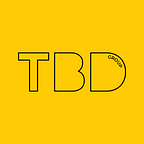How to run a successful WhatsApp group
WhatsApp chats have changed in recent months. We use a group and a community to keep TBD members up to date on the latest emerging technology, behaviour and data science in the public infofeed group, but there are lots of options available to you. Here are some tips to make sure you are using WhatsApp and not the other way around.
The TBD community uses a private group to share job information, reports, advice and a lot more. We’ve used them from day one and recently change their structure. To get into the private group simply attend a TBD event virtually or in person — there’s a Meetup happening in September.
WhatsApp groups are commonplace, there’s lots for things like neighbour groups to school updates — a collection of people. A community on the other hand is a group of groups. A tad confusing and feature-heavy (see the image below), but that’s social messaging for you! With +2.24 billion users, WhatsApp is the app to use if you want to maximise the chance of growth (if that’s your goal).
In the last twelve months, I have been approached by businesses that are using WhatsApp for; news roundups, research panels, Insta-pod recruitment, traffic generators, social planning and (gulp) pitching stories.
All valid, interesting ideas — and there are millions more — but how do you keep the groups and communities usable? Sure you can mute them (and large groups recommend you do) but that is not what admins or WhatsApp need. Instead, WhatsApp groups need to focus on being useful and giving a good amount of signal. Here are some top tips group admins should consider:
1) Regularly post community guidelines and notes about ‘reply’ functionality. Whether a new group or an established one it never hurts to post community/group guidelines and names of group admins in case people have questions. Larger and more socially-focussed groups especially benefit from doing this (especially reminding people about ‘reply’ functionality) as it can help topics stay on track and members know when to dip in and out and avoid self-promotional posts.
2) Create recognised post types and images for important or regular information. The content contained will vary from group to group but if you create a post that is easily recognisable (image, emoji, ASCII) people are more likely to spot the post in more active groups (plus it’s easy to search for).
3) Explore the data (or what’s missing) by using a tool like WhatsAnalyzer or ChatVisualizer (check terms and conditions first). A handy tool that completes data visualisation on your exported chats. Use the data to determine when to post, topics to post about and members you might want to contact to be more active or ask if anything different needs to be done.
4) Get quick feedback using Google Forms and Doodle. Ask a question or 20 using Google Forms or schedule a meet-up easily with a quick link from Doodle both make running large groups more manageable and fairer. Using bit.ly can also add an extra layer of measurement for WhatsApp group admins (and users).
5) Schedule discussions. It may sound strange but one of the best WhatsApp groups I am in schedules specific times to discuss topics (similar to Twitter chats or AMA on Reddit). One group even goes further and gets members to help create a Google Doc on the subject that is then edited by admins and then sent to everyone. This is unlikely to work for every group but it could be a good way to limit endless rivers of updates and create something usable faster.
Want to get started with a WhatsApp group? Check out the WhatsApp group chat help area first.
Make sure you join the WhatsApp TBD infofeed for a daily burst of watercooler news about technology, behaviour and data here.
